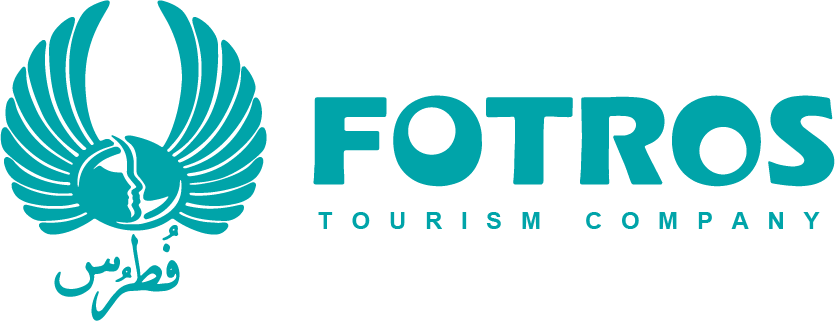
Cosmetic Surgeries
Liposuction


Liposuction, also known as simply lipo, is a surgical procedure designed to remove excess fat from various areas of the body. The goal of liposuction is to improve body contour and shape by removing localized fat deposits that are resistant to diet and exercise. It is a cosmetic procedure and is not intended for weight loss or as a substitute for a healthy lifestyle.
Liposuction procedure:
Consultation: Before undergoing liposuction, you'll have a consultation with a board-certified plastic surgeon. During this consultation, you'll discuss your goals, medical history, and the areas you want to target for fat removal. Your surgeon will assess your suitability for the procedure and provide you with information about the risks and benefits.
Preoperative preparations: If you decide to proceed with liposuction, you'll be given pre-operative instructions, which may include avoiding certain medications, fasting before the procedure, and arranging for someone to drive you home after surgery.




Anesthesia: Liposuction is typically performed under either general anesthesia (you are completely unconscious) or local anesthesia with sedation (you are awake but relaxed). The choice of anesthesia depends on the extent of the procedure and your surgeon's recommendation.
Tumescent technique: In most liposuction procedures, a tumescent solution is injected into the fatty tissue. This solution contains a combination of saline, local anesthetic (lidocaine), and epinephrine, which helps reduce bleeding and makes the fat easier to suction out.
Fat removal: The surgeon inserts the cannula through the incisions and uses controlled movements to break up and suction out the excess fat. The cannula is connected to a vacuum or suction device, which removes the fat from the body.
Sculpting: The surgeon sculpts the treatment area to achieve the desired contour. This may involve removing different amounts of fat from various areas.
Recovery: After the procedure, you will be monitored in a recovery area. You may wear compression garments to reduce swelling and support the newly contoured area. Depending on the extent of your liposuction, you may be able to go home on the same day or spend a night in the hospital.
Post-operative care: Follow your surgeon's post-operative instructions, which may include taking pain medications, wearing compression garments, and avoiding strenuous activities for a period of time. You'll also have scheduled follow-up appointments to monitor your progress.
It's important to note that liposuction is not a weight-loss solution but rather a body contouring procedure. The results are often visible after the swelling subsides, which may take several weeks to a few months. As with any surgical procedure, liposuction carries risks, so it's crucial to choose a qualified and experienced surgeon and discuss your goals and concerns thoroughly during your consultation.
liposuction is suitable for a person:
Candidates for liposuction should be in good general health. Certain medical conditions or serious illnesses might make the procedure unsafe.
Keep in mind that Liposuction is not a weight loss method. It is best suited for individuals who are at or near their ideal body weight but have localized areas of stubborn fat that do not respond to diet and exercise.
Patients should have realistic expectations about the outcomes of liposuction. It can improve body contours, but it may not result in a dramatic transformation.
Targeted areas of fat: Liposuction is typically used to remove fat from specific areas, such as the abdomen, thighs, hips, buttocks, arms, and chin.
Good skin elasticity is important for achieving optimal results. Liposuction removes fat, but it does not tighten loose or sagging skin. If there is significant skin laxity, additional procedures like a tummy tuck (abdominoplasty) may be recommended.


Age can be a factor in the success of liposuction. Younger individuals tend to have better skin elasticity, which can lead to more satisfying results. A healthy lifestyle, including regular exercise and a balanced diet, can help maintain the benefits of liposuction. The most important step in determining suitability for liposuction is to consult with a board-certified plastic surgeon. They can assess your individual circumstances, discuss your goals, and determine if liposuction is the right option for you. They will also explain the procedure, potential risks, and expected recovery.
It's important to note that liposuction is not a substitute for weight loss or a healthy lifestyle. It is a body contouring procedure designed to target specific areas of localized fat. Candidates should carefully consider their goals and consult with a qualified surgeon to determine if liposuction is the right choice for them.


Wear Compression Garments: You'll likely need to wear compression garments, such as a compression vest or bodysuit, as directed by your surgeon. These garments help reduce swelling and promote proper healing.
Rest and Avoid Strenuous Activity: Rest is crucial during the initial recovery period. Avoid strenuous activities and exercise until your surgeon gives you the green light. Typically, you'll need to take it easy for the first few weeks.
Monitor Drains (if applicable): Some liposuction procedures may involve the use of drains to remove excess fluids. If you have drains, follow your surgeon's instructions for care and maintenance.
Gentle Massage: In some cases, gentle post-operative massages may be recommended to reduce swelling and promote even results. Only do this if your surgeon advises it.
General care after liposuction:
General care after liposuction is essential to ensure a smooth and safe recovery. Here are some key steps to follow:
Follow Your Surgeon's Instructions: The most important guideline is to follow your surgeon's post-operative instructions diligently. They will provide you with specific advice tailored to your surgery and your individual needs.
Pain Management: Pain management is crucial for comfort and mobility. Your healthcare team will provide you with pain medication and, if possible, explore non-pharmacological pain relief methods.
Antibiotics: If prescribed by your surgeon, take antibiotics as directed to prevent infection.
Stay Hydrated: Drinking plenty of water helps flush out toxins and aids in the recovery process.
Swelling and Bruising: Swelling and bruising are common after liposuction. Applying cold compresses in the initial days and keeping the treated areas elevated can help reduce these symptoms.
Maintain a Healthy Diet:Eating a balanced diet and staying hydrated can aid in the healing process. Proper nutrition is essential for tissue repair and recovery.


Pain Management: You may experience some discomfort or pain, which is normal. Your surgeon will prescribe pain medication if needed, and you should take it as directed. Do not take over-the-counter medications without consulting your surgeon.
Avoid Smoking and Alcohol: Smoking and alcohol can interfere with the healing process and increase the risk of complications. It's best to avoid them during your recovery.
Follow-Up Appointments: Attend all follow-up appointments with your surgeon as scheduled. They will assess your progress and provide further guidance.
Scar Care: Depending on the type of liposuction, you may have small incisions and scars. Follow your surgeon's recommendations for scar care, which may include silicone gels or creams.
Gradual Return to Normal Activities: After the initial recovery period, gradually return to your normal activities and exercise routine as advised by your surgeon.
Be Patient:It takes time for the final results to become apparent. It can take several months for the swelling to subside, and for the treated areas to settle into their new shape.
It's essential to consult your surgeon for specific post-operative care instructions, as the recommendations can vary depending on the type of liposuction performed and your unique circumstances. Always reach out to your surgeon if you have any concerns or experience unusual symptoms during your recovery.


Surgery Details
 Anesthesia: General
Anesthesia: General Operation: 1 – 1:30 hour
Operation: 1 – 1:30 hour Clinical Stay: 1 day
Clinical Stay: 1 day Total Stay: a week
Total Stay: a week Back to Work: about 10 Days
Back to Work: about 10 Days Healing: 3 - 4 Weeks
Healing: 3 - 4 Weeks
Our services include:
![]() our online services include: quotes and consultation
our online services include: quotes and consultation
![]() Planning the highest word-level medical trips and quality hospitals and medical centers according to the patient's request and budget.
Planning the highest word-level medical trips and quality hospitals and medical centers according to the patient's request and budget.
![]() Appointing treatments by the most skilled and experienced doctors.
Appointing treatments by the most skilled and experienced doctors.
![]() Airport pick-up/drop off, check-ups, accompanying translator, book hotel (for patients and their families)
Airport pick-up/drop off, check-ups, accompanying translator, book hotel (for patients and their families)
![]() Pre-hospitalization / post-hospitalization care services
Pre-hospitalization / post-hospitalization care services




All-Inclusive Medical Travel Packages
based on your budget, our team will assist you in choosing the best hotels, doctors, and medical centers. Our packages include:
 Airport Pickup Services
Airport Pickup Services Airport Dropoff services
Airport Dropoff services Hotel
Hotel Ticket
Ticket visa
visa translator
translator Transfer
Transfer SIM Card
SIM Card Sightseeing
Sightseeing
 why Iran
why Iran
Patients may choose to have abdominoplasty (commonly known as a tummy tuck) in Iran for a variety of reasons
Cost, Quality of Care, Privacy and Discretion, Combined Tourism, no Waiting Times
![]()
Fotros is an Iranian health tourism company with a professional team consisting of a support team and word-level doctors in medical and cosmetic surgeries like Neurosurgery, Rhinoplasty, Breast cosmetic surgeries, Liposuction, tummy tuck, etc.

















 why Iran
why Iran